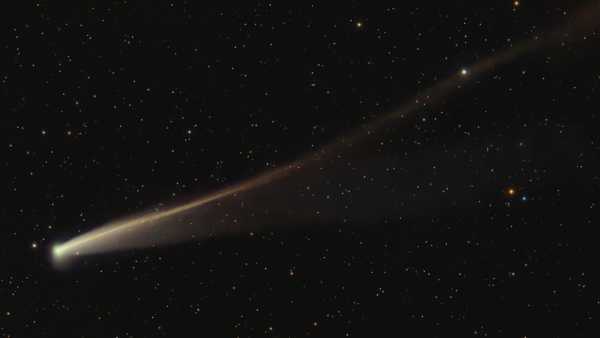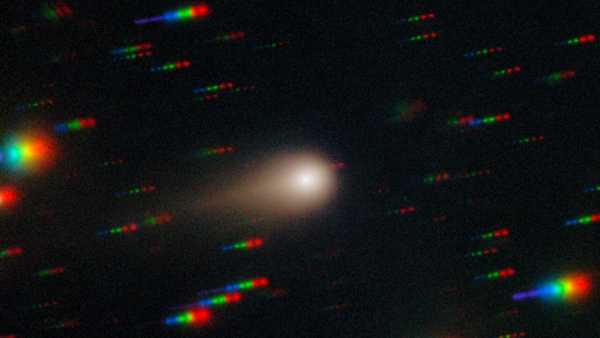
Debris from the IFT-7 spaceship falls rapidly from the sky. (Photo credit: Dean Olson via Twitter)
The sudden breakup (i.e. explosion) of SpaceX's Starship megarocket, which sent a shower of hot metal fragments over the Caribbean Sea in mid-January, may have released a significant amount of harmful pollutants into the Earth's upper atmosphere.
The rocket's upper stage exploded at an altitude of about 90 miles (146 kilometers) and weighed about 85 tons without fuel, according to astronomer and space debris expert Jonathan McDowell. Connor Barker, an atmospheric chemistry researcher at University College London, said its re-entry into the atmosphere could have produced 45.5 metric tons of metal oxides and 40 metric tons of nitrogen oxides. Nitrogen oxides, in particular, are known to damage Earth's protective ozone layer.
Barker, who recently published an inventory of rocket emissions and pollutants from satellite reentry in the journal Nature, posted his estimates on his LinkedIn profile shortly after the incident. However, in an email to Space.com, he emphasized that the numbers were rough estimates, not precise calculations of the incident’s environmental impact.
However, in a post on LinkedIn, Barker noted that the amount of metal air pollution potentially generated by the incident is comparable to the amount generated by a third of the meteorite material that burns up in the Earth's atmosphere each year.
It is difficult to determine exactly how much pollutant was released into the upper atmosphere by the Starship accident. Scientists, for example, are also unsure how much of the mega-rocket's mass burned up and how much fell to Earth.
McDowell told Space.com that “many tons” of cargo likely fell into the ocean.
Fortunately, Starship’s upper stage is made of stainless steel, not aluminum, like satellites and the upper stages of many other rockets, including SpaceX’s Falcon 9. Burning aluminum is a concern for many scientists. When aluminum burns at high temperatures during a satellite’s re-entry, it produces aluminum oxide, or alumina, a white powder known to destroy the ozone layer and change the reflectivity of Earth’s atmosphere.
In recent years, there has been a dramatic increase in the number of satellites orbiting the Earth and the number of re-entries. This has also led to a significant increase in alumina emissions into the mesosphere and upper stratosphere, the otherwise clean middle layers of the atmosphere. Air pollution in the mesosphere and upper stratosphere is of concern to scientists because the high altitudes at which it occurs mean that pollutants remain in the air for long periods.
Scientists believe that the amount of alumina from burning satellites is already close to levels produced by the atmospheric destruction of natural space objects such as asteroids or meteoroids, which contain only trace amounts of aluminum. The amount of nitrogen oxides produced during re-entry is also approaching that produced by natural space bodies.
Nitrogen oxides are formed when space rocks or pieces of space debris traveling at hypersonic speeds compress the surrounding air as they fall to Earth. The nitrogen atoms heat up and react with oxygen, creating harmful oxides.
With the expected increase in rocket launches and satellite fleets and the frequency of re-entries, concentrations of these harmful gases and particles could increase rapidly. The pollutants could prevent the planet's ozone layer from recovering, compounding the damage caused by ozone-depleting substances used in aerosol cans and refrigerators in the past. Air pollution from burning satellites could also change the amount of heat trapped in the Earth's atmosphere, which could have serious consequences.
Sourse: www.livescience.com





